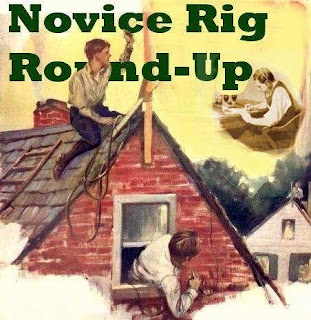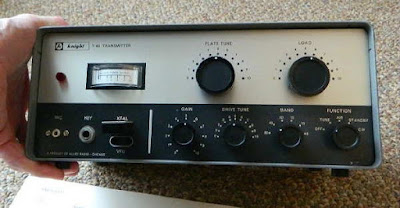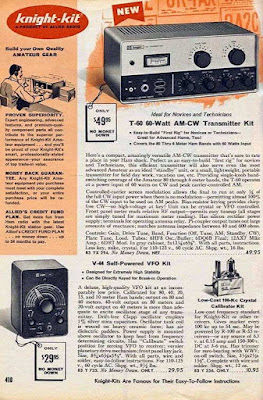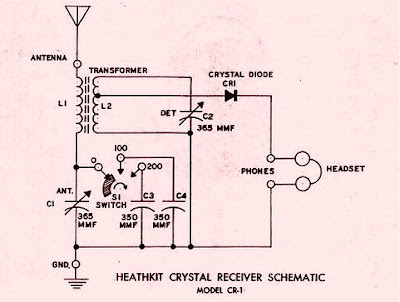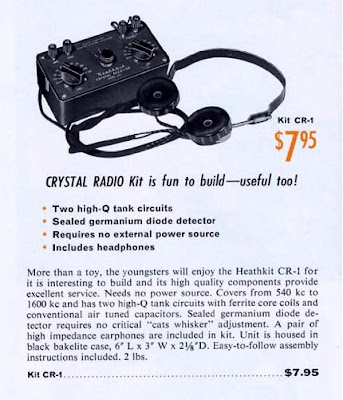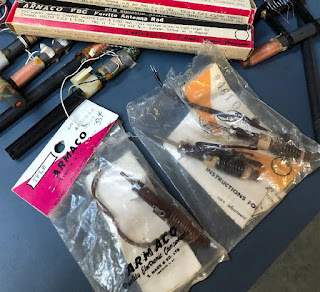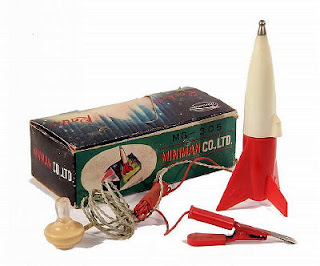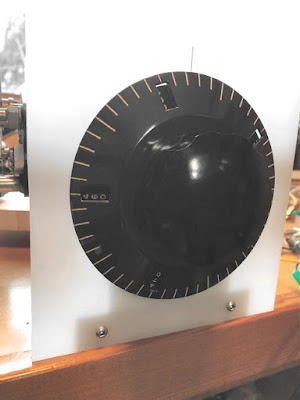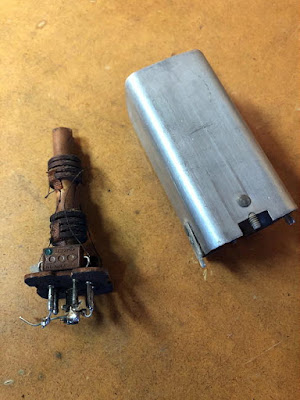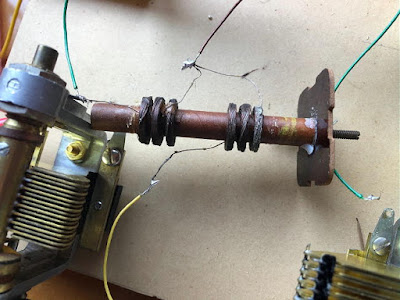Author Archive
 LED Lights In The Shack
LED Lights In The Shack
The following blog was originally published in 2016 but is still relevant today.
A recent posting by Phil, KO6BB, to Yahoo Group's ndblist, described his recent search for some LED lamps to replace the CFL's in his shack / radio workbench area. If you have been wondering how much RFI that LED lamps might be producing, you may find Phil's findings of some value.
"Recap
I had a 60W equivalent CFL in the floor lamp directly over my operating position. I'd tried a 100W equiv one but it was extremely noisy! Also a couple CFLs in the ceiling lamp.
This is a floor lamp with a crookneck at the top and a triangular metal
shade reminiscent of the old style desk lamps, bulb is horiz to the
floor. I've used it for years and like it because it places the light
directly over the operating position work area (keyboard, radios etc).
The actual bulb was about 4.5 inches from the front of the Softrock SDR
receiver (in a plastic case), with the base of the lamp (where the
electronics are) about 7.5 inches (somebody asked about the distances).
This coupled a LOT of RFI directly into the SDR, visible on the
waterfall. For best results when recording and having the light on I'd
slip a 60W incandescent lamp in place of the CFL. The lamp is also
about 16 inches above the operating table, and when listening to ANY
portable radio on the table, if it was in the AM or Longwave band and
using the built in loopstick antenna, got a LOT of RFI from the lamp
(unless the lamp was off ;-)
So today I went down to Lowes (we have a Costco, but I don't have a
card) and looked at their LED lamp offerings. As I expected they had a
large variety of them, from a low cost 3 pack for ~$9.00 for 60W units
to about $18.00 or so each (Sylvania). From what I read here I wanted
to avoid the REALLY cheap ones as some reported them to be 'noisy'.
Also, I wanted to put a 75W equivalent unit in the one over the
operating position, and a pair of 100W equivalent units in the ceiling
lamp. All three had CFLs, and if I walked around the radio room with a
portable radio and the ceiling lamp on I could hear it's 'hash' anywhere
in the room. . .
The ones I settled on were a brand I'd never heard of, "UtiliTech Pro"
soft white, 75W for the bench and 2 100W ones for the ceiling. They
were what I'd call "mid-priced", $8.98 for the 75W and $9.98 for the
100W ones.
Specs:
75 W one draws 12W and gives 1100 Lumens.
100W one draws 16.5W and gives 1600 Lumens (the pair in the ceiling
should then be 3200 Lumens if I calculated right).
How low is the RFI to my Radios?
75W one over the bench:
NO trace from the lamp electronics visible in the SDR waterfall at
all. With a portable radio on the bench-top, NO audible RFI. Put a
portable radio up to the "bulb" part (light area) and with no station
tuned in can't hear ANY RFI. Move the portable to the base area of the
lamps there is SOME RFI, but I won't be putting the radio that close to
the lamp, move it a couple inches away and the noise disappears.
100W ones in the ceiling lamp, NO audible RFI in the portable when
walking around the room, RFI just barely perceptible right next to the
light wall switch that turns the lamp on, again, audible IF I put the
radio right up to the base of the lamps, not a likely real-world scenario!
Upshot?
Based on the sample of three that I bought and the almost
non-existent RFI from them I'd consider the UtiliTech Pro lamps to be a
good product and suitable for use in the radio room. I consider them
good value for the ~$30.00 I spent for three."
If you have tested anything similar (other brands / models), please let me know and I will add it to Phil's helpful information.
KO6BB's website can be found here, along with some of his homebrew equipment.
 |
| Utilitech Pro Soft White LED Bulb |
A recent posting by Phil, KO6BB, to Yahoo Group's ndblist, described his recent search for some LED lamps to replace the CFL's in his shack / radio workbench area. If you have been wondering how much RFI that LED lamps might be producing, you may find Phil's findings of some value.
"Recap
I had a 60W equivalent CFL in the floor lamp directly over my operating position. I'd tried a 100W equiv one but it was extremely noisy! Also a couple CFLs in the ceiling lamp.
This is a floor lamp with a crookneck at the top and a triangular metal
shade reminiscent of the old style desk lamps, bulb is horiz to the
floor. I've used it for years and like it because it places the light
directly over the operating position work area (keyboard, radios etc).
The actual bulb was about 4.5 inches from the front of the Softrock SDR
receiver (in a plastic case), with the base of the lamp (where the
electronics are) about 7.5 inches (somebody asked about the distances).
This coupled a LOT of RFI directly into the SDR, visible on the
waterfall. For best results when recording and having the light on I'd
slip a 60W incandescent lamp in place of the CFL. The lamp is also
about 16 inches above the operating table, and when listening to ANY
portable radio on the table, if it was in the AM or Longwave band and
using the built in loopstick antenna, got a LOT of RFI from the lamp
(unless the lamp was off ;-)
So today I went down to Lowes (we have a Costco, but I don't have a
card) and looked at their LED lamp offerings. As I expected they had a
large variety of them, from a low cost 3 pack for ~$9.00 for 60W units
to about $18.00 or so each (Sylvania). From what I read here I wanted
to avoid the REALLY cheap ones as some reported them to be 'noisy'.
Also, I wanted to put a 75W equivalent unit in the one over the
operating position, and a pair of 100W equivalent units in the ceiling
lamp. All three had CFLs, and if I walked around the radio room with a
portable radio and the ceiling lamp on I could hear it's 'hash' anywhere
in the room. . .
The ones I settled on were a brand I'd never heard of, "UtiliTech Pro"
soft white, 75W for the bench and 2 100W ones for the ceiling. They
were what I'd call "mid-priced", $8.98 for the 75W and $9.98 for the
100W ones.
Specs:
75 W one draws 12W and gives 1100 Lumens.
100W one draws 16.5W and gives 1600 Lumens (the pair in the ceiling
should then be 3200 Lumens if I calculated right).
How low is the RFI to my Radios?
75W one over the bench:
NO trace from the lamp electronics visible in the SDR waterfall at
all. With a portable radio on the bench-top, NO audible RFI. Put a
portable radio up to the "bulb" part (light area) and with no station
tuned in can't hear ANY RFI. Move the portable to the base area of the
lamps there is SOME RFI, but I won't be putting the radio that close to
the lamp, move it a couple inches away and the noise disappears.
100W ones in the ceiling lamp, NO audible RFI in the portable when
walking around the room, RFI just barely perceptible right next to the
light wall switch that turns the lamp on, again, audible IF I put the
radio right up to the base of the lamps, not a likely real-world scenario!
Upshot?
Based on the sample of three that I bought and the almost
non-existent RFI from them I'd consider the UtiliTech Pro lamps to be a
good product and suitable for use in the radio room. I consider them
good value for the ~$30.00 I spent for three."
If you have tested anything similar (other brands / models), please let me know and I will add it to Phil's helpful information.
KO6BB's website can be found here, along with some of his homebrew equipment.
 Hunting For NDBs In CLE254
Hunting For NDBs In CLE254

Once again it's a CLE weekend.
During these stressful times, the CLE might hopefully provide some peaceful relief for you.
'CLE's are 'Co-ordinated Listening Events, and NDB DXers around the world focus their listening time on one small slice of the NDB spectrum.
This time the hunting ground is the 20 slice from 400.0 - 419.9 kHz. kHz
A good target for this one is MOG (404kHz) in Montague, California, up near the border with Oregon. It gets out very well and has been logged from Finland to Hawaii. Its been on-and-off of late so maybe you can catch it while it's on again!
Listen for MOG's upper sideband on 405.027kHz with your receiver in the CW mode.
From CLE coordinator Brian Keyte (G3SIA), comes the following CLE info:
Hello all,
Our 254th Coordinated Listening Event starts on Friday.
This frequency range is not packed with signals for any of us, but if conditions are OK there should be some nice surprises.
Do join in, whether you have days to spare, or only an hour or so over the weekend. Staying at home seems to be essential advice for most of us at present - this could be a great way of spending time there!
Days: Friday 27 March - Monday 30 March 2020
Times: Start and end at midday your LOCAL time
(Many of us will be changing our home clocks this weekend -
however UTC time continues unaffected)
Range: 400 - 419.9 kHz
Please log all the NDBs that you can identify with nominal (listed) frequencies in the range - it includes 400 kHz, but not 420 kHz - plus any UNIDs that you come across there.
Send your final log to the List (no attachments please and ideally in a plain text email) with ‘FINAL CLE254’ in its title.
Show on each line:
# The Date (e.g. '2020-03-27', etc., or just '27' )
# The Time in UTC (the day changes at 00:00 UTC).
# kHz - the nominal published frequency, if known.
# The Call Ident.
Please show those main items FIRST. Other optional details such as Location and Distance go LATER in the same line.
As always, of course, tell us your own location and brief details of the equipment that you were using during the Event.
We will send the usual 'Any More Logs?' email at about 19:00 UTC on Tuesday so that you can check that your log has been found OK.
Do make sure that your log has arrived on the List by 08:00 UTC on Wednesday 1 April at the very latest.
We hope to complete making the combined results within a day or two.
You can find full details about current and past CLEs from the CLE page http://www.ndblist.info/cle.htm It includes access to CLE254 seeklists for your part of the World, prepared from the previous loggings in Rxx. (Thanks, Martin and Alan, for your help with that)
Good listening
- enjoy the CLE and do take care of yourself and your family.
Brian and Joachim
-----------------------------------------------------------------
From: Brian Keyte G3SIA ndbcle'at'gmail.com
Location: Surrey, SE England (CLE coordinator)
-----------------------------------------------------------------
(If you would like to listen remotely you could use any one remote
receiver for your loggings, stating its location and owner and with their
permission if required. A remote listener may NOT also use another
receiver, local or remote, to make further loggings for the same CLE)
These listening events serve several purposes. They:
The NDB List Group is a great place to learn more about the 'Art of NDB DXing' or to meet other listeners in your region. There is a lot of good information available there and new members are always very welcome. As well, you can follow the results of other CLE participants from night to night as propagation is always an active topic of discussion.
You need not be an NDB List member to participate in the CLEs and all reports, no matter how small, are of much value to the organizers.
Remember - 'First-time' logs are always VERY welcome!
Reports may be sent to the NDB List Group or e-mailed to CLE co-ordinator, Brian Keyte (G3SIA), whose address appears above. If you are a member of the group, all final results will also be e-mailed and posted there.
Please ... give the CLE a try ... then let us know what NDB's can be heard from your location! Your report can then be added to the worldwide database to help keep it up-to-date.
Have fun and good hunting!
- determine, worldwide, which beacons are actually in service and on-the-air so the online database can be kept up-to-date
- determine, worldwide, which beacons are out-of-service or have gone silent since the last CLE covering this range
- will indicate the state of propagation conditions at the various participant locations
- will give you an indication of how well your LF/MF receiving system is working
- give participants a fun yet challenging activity to keep their listening skills honed
The NDB List Group is a great place to learn more about the 'Art of NDB DXing' or to meet other listeners in your region. There is a lot of good information available there and new members are always very welcome. As well, you can follow the results of other CLE participants from night to night as propagation is always an active topic of discussion.
You need not be an NDB List member to participate in the CLEs and all reports, no matter how small, are of much value to the organizers.
Remember - 'First-time' logs are always VERY welcome!
Reports may be sent to the NDB List Group or e-mailed to CLE co-ordinator, Brian Keyte (G3SIA), whose address appears above. If you are a member of the group, all final results will also be e-mailed and posted there.
Please ... give the CLE a try ... then let us know what NDB's can be heard from your location! Your report can then be added to the worldwide database to help keep it up-to-date.
Have fun and good hunting!
 Here Comes The Novice Rig Roundup (NRR) 2020!
Here Comes The Novice Rig Roundup (NRR) 2020!
One of the most enjoyable operating events of the year is fast approaching -- the Novice Rig Roundup or 'NRR'. Technically, it is a contest, but I have the feeling that most participants think of it as just a lot of fun and a nice opportunity to hear and work some of the great old 'classics' of the past -- rigs that were used when they were teenage Novices or rigs that they could only drool about owning, back in those formative years when they each discovered the magic of radio.
Once again the bands will be alive with the sounds of Heath AT-1s, DX-20s, DX-35s, DX-40s and DX-60s, Johnson Adventurers, Eico 720s, Drake 2NTs, Knight T-50s and T-60s, Ameco AC-1s and of course, an endless variety of lovingly-constructed homebrew delights and ... a full week plus two weekends to celebrate the 'good old radio days' of their teen years, as many of us remember them.
The dates to remember are 0000 UTC March 7 to 2359 UTC March 16 and this multi-day opportunity is, for me, what makes the NRR so enjoyable. With a nice diversion from the usual 'contest frenzy' associated with standard weekend operating events, the NRR can be enjoyed throughout the week, whenever you choose to participate. If last year's operating patterns continue, you should find activity at any time of the day ... and even more as sunset arrives.
With the fast-approaching solar minimum, we will be hard-pressed to relive the glory days of worldwide 15m propagation, but many transcon contacts were made during last year's event thanks to some well-timed solar activity! With a little luck and, hopefully, a well-timed solar flare, we may get lucky! If you operate during the daylight hours, please get on 15m and give it a shot ... and be sure to announce your activity on the NRR's sked and chat page here, so that others will know where to find you, especially if you are rock bound in true Novice fashion. With our present spotty conditions, we need all the help we can get and the sked page proved a very valuable asset during last year's affair.
Although technically not required, if you plan to participate it's best to obtain your own NRR number, which is an easy 30-second process.
Additionally, there is an online logger where participants can post their daily log. The nifty logger also keeps track and figures out your score as it goes and no 'after contest' log needs to be submitted. If you plan on submitting a log, the logger is a requirement. The logger will also require you to set up a 'log-in' and once again, a simple 30-second process will take care of that from here. If you used the logger last year, you will have to set it up again for this year as the old system has been changed.
Stations may run either crystal-control or VFO or can switch between either method ... the online logger will keep track and score things appropriately.
All of the rules and information can be found on the NRR's excellent website. As well, the soapbox comments and station pictures from last year's NRR may provide the inspiration that you need to spark-up your own activity in this year's event ... from what I can tell, this year will be bigger and busier than ever!
There is also a dedicated NRR Group, often the source of much valuable discussion but there is a now HUGE group of great NRR chat and activity now on Facebook's NRR Group here. I avoided Facebook for many years and have now discovered that it is an excellent forum for real time chat and information exchange ... one can still choose to maintain a very low profile and avoid unwanted interaction if set up correctly.
In 2017 I ran my homebrew Longfeller in the (now eliminated) QRP category, and had a ton of fun. You can read about it here. Last year, I refurbished a nice Drake 2NT that had been gathering dust in the basement for over 25 years and ran it during the 2018 NRR. You can read about my activity and some of the rigs encountered during last year's fun here.
If you have access to the web while operating, be sure to bookmark and check into the NRR's realtime chat page. Many ops that are crystal controlled will announce their operating frequencies, making it easier for you to find them ... sometimes way up or down from the normal NRR watering holes of ~ 3550 - 3650 kHz, 7100 -7125 kHz, 21.100 - 21.150 MHz and 28.114, 28.120 MHz ... and don't forget to check the colorburst crystal frequency of 3579!
'CQ'ers should always remember to tune up and down the watering hole for replies from other NRR stations that may be crystal controlled and not able to answer you on your own frequency!! This is extremely important and a real reminder of what was common practice back in the Novice days.
 |
| courtesy: Harry - VE7AIJ |
You still have time to get that old clunker on the air but if that's not possible, you can join the fun with your modern rig as well ... all are welcome to jump in and have a great week of radio-fun. I think you will be surprised, just as I was last year, how good some of these old classics can sound ... and you'll hear some great bug-fists as well.
Need more inspiration? ... here's a summary of my own experience of the 2018 NRR:
***********************
The NRR once again provided many notable highlights over the nine day event.
Almost topping the list was just experiencing the variety of old classics and hearing how well almost all of them sounded. Numerous Knight T-60s, Drake 2NTs, Heath DX-40s, Johnson Adventurers and Eico 720s, along with a nice variety of homebrew MOPAs and one-tube power oscillators graced the nightly airwaves. These oft-forgotten shelf-queens always seem to develop super-powers, far beyond their expectations, when the NRR rolls around!
I was really surprised to work so many T-60s, a small and inexpensive 60 watt transmitter kit from 1962 using a popular 6DQ6 television sweep tube ... one never expected to achieve such RF greatness! I was very impressed with every one that I heard.
What radio-struck pre-Novice teen, dreaming about getting on the air, could resist a clever ad like this.
Scott, KA9P's 80m T-60 signal sounded as sweet as it looks in his 2018 setup, paired with his Heathkit HR-10B inhaler.
 |
| KA9P 2018 NRR station with RAF Vulcan bomber Type 51 hand pump |
Right up there with the plethora of T-60s was the Drake 2NT, another great sounding radio and also my choice for this year's event. My summer refurbishing project, described here, proved a worthy companion, although my much-treasured VF-1 VFO's short term drift probably had my 2NT getting red in the face whenever I took her off of crystal control to scurry around the band, seeking out the CQ'ers. I've had a love-hate relationship with the VF-1 ever since buying my first one back in '63!
 |
| VE7SL 2018 NRR with 2NT, VF-1 and my Original '63 Vibroplex |
Yet another 2NT packed a powerful punch from West Virginia, keyed by Dave, W3NP, when we exchanged 579 reports on 40m, 45 minutes before sunset.
 |
| W3NP - 2018 NRR setup |
I made three contacts on 15m this year: W5IQS in Texas, K2YWE in Maryland and WN4NRR in Florida, whose S9 reply to my 'CQ NRR' just about took my head off ... what a nice surprise to hear the booming signal from Bry's 2NT powerhouse. Dan, K2YWE, was no slouch either, as his Globe Scout was music to my ears when his signal quickly rose out of the noise just long enough to make the coast-to-coast journey. If the predictions for future solar cycles become reality, there may be many more NRRs before we experience the magic of 15m once again.
 |
| K2YWE's Globe Scout and Adventurer were worked on all three bands! |
My NRR exchanges with George, N3GJ (KA3JWJ) in Pennsylvania, truly demonstrated just how well the low bands were performing. More than an hour before my local sunset, I responded to his 569 40m 'CQ NRR' only to learn that his signal, now reaching a solid 579, was coming from an original Ameco AC-1! This one-tube crystal-controlled power oscillator has, over the years, reached Holy Grail status among many amateurs. Originals are guarded like precious jewels and handed down from father to son ... or in George's case, from uncle to nephew!
 |
| N3GJ and his all powerful original AC-1 |
Heathkits were plentiful too, with the DX-60 seeming to be the rig of choice, often paired with the matching HG-10 VFO. Both Mark, VA7MM and Gary, W8PU, packed a wallop with these fine examples.
 |
| VA7MM - 2018 NRR set-up |
| W8PU - 2018 NRR set-up |
But it wasn't just DX-60s representing Benton Harbor engineering in the NRR. All of these neat old Heaths made it out to the west coast, sometimes on both 40 and 80. KN8RHM's (Rick) HW-16 made it here on 40m with a solid signal almost every night, while KE4OH (Steve) sported a modernized DX-20 in the form of Heath's HX-11. Steve even received the highly-treasured 'OO' report for his NRR chirp ... good job!
| KN8RHM - HW-16 NRR set-up |
 |
| KE4OH - HX-11 NRR station |
| N3PDT - DX-40 NRR transmitter |
Rich, WN7NRR / AG5M operating in nearby Washington state put some of his 44 crystals to work with his HW-16 ... that's some collection!
| WN7NRR - HW-16 NTT set-up |
Howie, WB2AWQ in Reno, was using his homebrew pair of 807s, driven with a Millen 90700 swing-arm VFO from 1945. Most shacks worldwide, including the Novices, found plenty of use for the 807 as they were dirt-cheap in the post war surplus market. The filament has a beautiful illumination and if a bit gassy as most are by now, emit a wonderous blue glow with each press of the key.
 |
| WB2AWQ - 807s |
 |
| Millen VFO from 1945 at WB2AWQ |
| KD7JG's 1625 NRR mainstay |
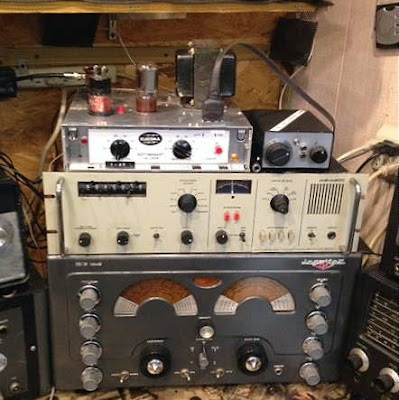 |
| K4IBZ's 10 watter |
 |
| AA8V's homebrew NRR stack |
The runner-up highlight was my 80m QSO with Lou, VE3BDV / VE3AWA who worked me on 3568 kHz using his Bare-Essentials 50C5 crystal controlled power oscillator at 7 watts. I understand that this rig enjoyed some popularity among many Novices as a 'first transmitter'. Being connected directly across the A.C. mains, fully exposed, would require some delicate handling!
 |
| VE3BDV / VE3AWA - 50C5 Bare - Essentials power oscillator |
I finished up the NRR with 123 contacts, a lot better than last year's event when I was running the Longfeller at 5 watts.
As indicated on the NRR website, this is "more of an EVENT than just a typical contest ... once again taking our OLD ham radios off the shelf and putting them to use again! "
See you in the 2020 NRR!
 Barn Door Wide! Hunting For NDBs In CLE253
Barn Door Wide! Hunting For NDBs In CLE253

This weekend's upcoming CLE event will be the "Barn Door" listening event.
Participants are required to use receivers without the usual narrow filters. Some of the older tube radios can do this easily as can most homebrew receivers ... especially the regens!
If you've never listened to the NDB band with a wide bandwidth, it is a fascinating experience! If conditions are normal, you can typically hear a half dozen or more signals, all at various pitches, vying for your attention. It's almost as if you have plunked yourself down in the middle of the NDB forest of signals, and they are coming at you from all directions.
Many choose to use one of their homebrew receivers for this event, often as simple as a '1AD' or a '1 Active Device' circuit.
From organizer Brian Keyte:
Hello all
Here comes our sixth 'Barn Door' Coordinated Listening Event.
Between us there will be a great variety of ‘Back to Basics’ receiver
types in use. Maybe this is an opportunity for you to bring back to life
that old receiver that has been collecting dust for so long!
Days: Friday 21 to Monday 24 February 2020Times: Start at Midday on Friday 21st, your LOCAL time
End at Midday on Monday 24th, your LOCAL time
Frequencies: Centred on 360 kHz (see below)
NDBs: NOT MORE than 100 'normal' NDBs including any UNIDs
(That is not intended to be a target to reach)
We are all asked to listen with NON-SELECTIVE receivers - i.e. with a WIDE
filter or NO filter. Your 'barn door' should be open wide so you could hear,
at the same time, any NDBs 2 kHz away on both sides of your receiver
setting - E.g. NDBs on 348, 349, 350, 351 and 352 kHz with the receiver
set to 350 kHz.
You could listen with:
Whichever you choose, use the same receiver throughout the CLE.
If your choice of receiver includes a waterfall please use only the
audio output for your listening. You could even cover part of the
screen if there is no other way of stopping or hiding the waterfall.
Unfortunately the use of Pskov – and probably of recordings – is
not appropriate for this CLE.
You choose how wide a RANGE of frequencies you will listen in, CENTRED
ON 360 kHz. You could choose 350-370 kHz , 330-390 kHz, 260-460 kHz, etc.
(That allows each of us to choose a +/- range with enough NDBs to
match our equipment's capability. It will also allow us to compare our
loggings in the Combined Results, at least around 360 kHz).
Logs should show not more than 100 NDBs please (if more than 100
the harvester program will 'drop' the loggings furthest from 360 kHz).
We’ll summarise everyone's equipment on the first page of the combined
results, so please describe:
The RECEIVER/AERIAL you used and the FILTER(s) selected and,
if homebrew, the number of active devices used, transistor types, etc.
All the usual procedures for making logs apply:
Send your CLE log to NDB List, not in an attachment.
Please show on EVERY LINE of your log:
# The full date (or Day No.) and UTC (the day changes at 00:00 UTC).
# kHz - the beacon's nominal published frequency, if known.
# The Call Ident.
Show those main items FIRST on each line, before other optional details
such as Location, Distance, etc. Please send your complete log with
CLE253 and FINAL in the Subject line.
Whether you are a first time CLE-er or a regular, always make your log
interesting to everyone by giving your own location and do feel free
to share any comments you have on this unusual event.
Joachim or I will send the usual 'Any More Logs?' email at about 2000 UTC
on Tuesday 25th so that you can check that your log has been found OK.
Make sure your log has arrived on the List at the very latest by 09:00 UTC
on Wednesday 26th February.
We’ll try to complete making the combined results a day or so later.
However you choose to take part, we hope you will find your 'back to basics'
listening enjoyable and worthwhile.
Brian
------------------------------------------------------------------
From: Brian Keyte G3SIA ndbcle'at'gmail.com
Location: Surrey, SE England (CLE coordinator)
-------------------------------------------------------------------
P.S. NOT FOR YOU?
Listening without narrow filters is not going to revolutionise our hobby!
But there ARE some unexpected benefits and advantages:
1. Hearing several beacons on a few adjacent frequencies at the same time
becomes easier as you get practice at recognising them by listening to their
very different audio tones. At first, when listening to a random frequency
setting, you may hear just one or two beacons. But after listening for a
little while you realise that there are three - - four, maybe more, all of
them audible without altering any of the receiver controls.
It is a skill that gives satisfaction as you improve.
2. Hearing multiple beacons like that can be useful because, with no extra
tools, you can hear NDBs over a wide frequency range much more quickly than usual, perhaps spotting the arrival of new UNIDs or the return of occasional beacons. (To protect your hearing, keep your receiver gain controls fairly low, except around very quiet frequencies).
3. With normal listening it is easy to miss any NDBs that have abnormal
carrier frequencies or non-standard offsets. With 'Barn Door' listening
they won't escape because everything is let through.
4. When using a wide filter, you may be surprised by hearing some
Broadcast Station signals (e.g. harmonics) among the NDBs and you will
be able to identify them.
With a narrow filter, often you may not recognise an AM signal as audio
- it just sounds like nondescript 'hash' affecting a wide range of frequencies
around the central carrier.
Maybe listeners will report some other good things about their barn door
listening during the CLE - and probably some bad things too!
Do join in if you can.
**************************
**************************
These listening events serve several purposes. They:
- determine, worldwide, which beacons are actually in service and on-the-air so the online database can be kept up-to-date
- determine, worldwide, which beacons are out-of-service or have gone silent since the last CLE covering this range
- will indicate the state of propagation conditions at the various participant locations
- will give you an indication of how well your LF/MF receiving system is working
- give participants a fun yet challenging activity to keep their listening skills honed
The NDB List Group is a great place to learn more about the 'Art of NDB DXing' or to meet other listeners in your region. There is a lot of good information available there and new members are always very welcome. As well, you can follow the results of other CLE participants from night to night as propagation is always an active topic of discussion.
You need not be an NDB List member to participate in the CLEs and all reports, no matter how small, are of much value to the organizers.
Remember - 'First-time' logs are always VERY welcome!
Reports may be sent to the NDB List Group or e-mailed to CLE co-ordinator, Brian Keyte (G3SIA), whose address appears above. If you are a member of the group, all final results will also be e-mailed and posted there.
Please ... give the CLE a try ... then let us know what NDB's can be heard from your location! Your report can then be added to the worldwide database to help keep it up-to-date.
Have fun and good hunting!
 Loopstick Magic And The CR-1 Clone
Loopstick Magic And The CR-1 Clone
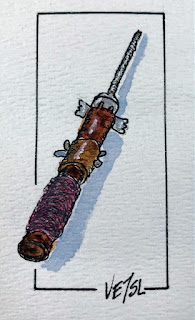 |
| BCB Ferrite Loopstick |
Regular blog readers may recall my two previous blogs, on the Heathkit CR-1 crystal radio receiver.
This very much sought-after radio is a well engineered ‘double-tuned’ set utilizing a series-tuned antenna tank circuit coupled to a parallel-tuned detector tank.
Both coils are wound on the same 1/4” diameter tubular form containing two ferrite slugs ... one for the antenna coil and one for the detector coil. The coils have been pre-wound and fixed on the form, about 20mm apart while the slugs have been waxed in place to set each inductance to the desired value.
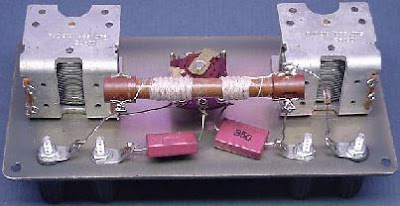 |
| courtesy: Scott's Crystal Radios |
I do wish that I'd had enough sense when I was a kid to buy myself a CR-1 as it seemed like they were dirt-cheap.
The $7.95 even included a set of headphones! Of course, $7.95 to a 12 year old was probably a lot of money, being about $70 in today’s currency!
My previous experience with homebrew DX crystal radios (ones that can hear stations other than strong locals) had taught me that they required large coils and ‘hot’ diodes. The CR-1 has neither of these yet it performed exceptionally well during the few weeks of evening tests a few months ago. I was able to log 50 stations, as described in the earlier blog ... and began to see that, just maybe, requirements may not be as rigid as I had always thought, when it comes to building DX sets!
When I discovered several ‘new-in-the bag’ broadcast band ferrite loopsticks in my junk box, I realized there might be an opportunity to allow me to make something very similar to the CR-1 circuit.
These are the same loopsticks used in the crystal ‘Rocket Radio’ of the 50s or in various transistor radios of the day.
I breadboard-mounted the two loopsticks so that the distance between the antenna coil and the detector coil could be adjusted, allowing some control over coupling and selectivity ... something not available with the stationary CR-1 coils.
Using the same antenna, headphones and external wavetraps, proved once again the excellent performance available from a very small and simple hi-Q coil system ... a DX machine without huge coils and expensive Litz! A total of 51 stations were logged over a two-week period, one more than was heard with the CR-1 and with a few ‘almost’ heards still waiting for one of those really good propagation nights. Having the ability to adjust the coupling was very helpful and made some of the weaker stations a little easier to detect. Stations in RED are local strong signals while those in BLUE are skywave propagated DX signals:
Mounting one of my old HRO 'PN' vernier dials on the main tuning capacitor provided plenty of bandspread, with each dial division corresponding to ~ 2kHz. It was very easy to locate any given frequency within the broadcast band once the dial was calibrated.
Soon after, I ran across a post by Zoltan Pap on Facebook’s ‘Crystal Set Radio Group’, describing his unique use of an old 455kHz I.F. transformer in a crystal tuner. I thought this was a rather brilliant idea and dug out an old I.F. can from the junkbox to see what it might offer.
The old I.F. can had two litz-wound (10 strand) tank coils, fixed in place over two adjustable ferrite slug cores ... in reality, something very similar to the, now very difficult to find, ferrite loopsticks used above.
The two inductors measured out at ~ 700uH - 1.1mH as the slugs were tuned from one end to the other. I was aiming for something close to the inductance used in the two CR-1 tank coils ... approximately 380uH.
A sufficient number of turns were removed from both coils to yield the needed inductance and both coils on the CR-1 breadboard clone were replaced with the old I.F. can coils.
In just a few minutes of tuning through the band, it was very easy to hear and separate all 16 local stations (RED in the above log). A few hours after sunset (on a not-so-good night) yielded quick copy of KPOJ (620kHz) in Portland, Oregon (231 miles) as well as CHED (630kHz) in Edmonton, Alberta (534 miles), demonstrating that even this old 1940's I.F. can could be turned into a crystal radio DX machine!
I don't believe the 'Q' of this pair of coils is very high, compared with the smaller loopstick, as its selectivity appears to drop off above 1000kHz. I'll try separating the form into two halves so that the coupling can be adjusted. The experiment is still under way but if you want to play and can't lay your hands on the pricey loopsticks, old I.F. cans are often much easier to find and probably a lot cheaper.
 ‘Barn Door’ CLE
‘Barn Door’ CLE
 The next CLE, coming up at the end of the month, will be another ‘barn-door’ event where listeners are encouraged to use wider bandwidths than normal ... typically something that will allow you to hear beacons at least 2kHz each side of the frequency that you are tuned to.
The next CLE, coming up at the end of the month, will be another ‘barn-door’ event where listeners are encouraged to use wider bandwidths than normal ... typically something that will allow you to hear beacons at least 2kHz each side of the frequency that you are tuned to.Your ears will be the only filter that you need!
This will be the first winter event of this type and results could be very interesting! In the past, many participants have used their homebrew regens including the popular ‘1AD’ (1 Active Device) MOSFET regen, built for the NDB part of the spectrum.
The last time this event occurred, I whipped together a 1AD regen in a day which proved amazingly effective in spite of the mid-summer propagation.
There is still plenty of time for you to put something simple together and you can find some helpful suggestions in my previous '1AD' blog here.
I will have more details later, before the event, so please stay tuned and consider getting something ready ... maybe all you need to do is wind a new coil for your favorite regenerative receiver!
 Hunting For NDBs In CLE252
Hunting For NDBs In CLE252
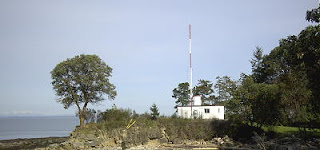 |
| AP-378 Mayne Island, BC |
How time flies. Once again it's a CLE weekend. It seems like the last one was just a week ago!
'CLE's are 'Co-ordinated Listening Events, and NDB DXers around the world focus their listening time on one small slice of the NDB spectrum.
This time the hunting ground is the 15 kHz slice from 370.0 - 384.9 kHz.
This is a somewhat dreaded range for me since my local blowtorch NDB, 'AP' (378 kHz), sits right in the middle of the range. 'AP' is located at the entrance to Active Pass, the main ferry route to Vancouver Island, and the antenna is about 3/4 of a mile down the beach from me. Needless to say, the beacon is about 40db over S9! With careful loop nulling, I can reduce this by about 25db but it's still an enormous signal to deal with.
Hopefully you can put 'AP' in your own log this weekend but its 25-watt signal will be much weaker for you. It's been logged as far east as Illinois and with your receiver in the CW mode, can be found on 378.399 kHz.
Things seem geomagnetically quiet at the moment but we are due for another blast on January 21st ... hopefully things settle-down for the weekend event.
From CLE coordinator Brian Keyte (G3SIA), comes the following CLE info:
Hello all
Here is your Early Advice of our next Co-ordinated Listening Event.
We are back to a normal event looking for the NDBs in a narrow and
fairly relaxing frequency range. Beginners, occasionals and regulars
are all very welcome to join in.
Days: Friday 24 January - Monday 27 January
Times: Start and end at midday, LOCAL TIME at the receiver
Frequencies: 370 - 384.9 kHz
Just log all NDBs you can identify that are listed in the range (it includes
370 kHz but not 385 kHz) plus any UNIDs that you come across there.
We last had a close look at this frequency range in CLE236 at the end of
September 2018.
Please look out for the full Final Details in a few days, including how to
present your log, etc.
Please send your CLE log to the List in a plain text email if possible(not in an attachment) with CLE252 and FINAL at the start of its title.
Show on each log line:
# The date (e.g. 2020-01-25, etc., or just 25) and UTC
(the date changes at 00:00 UTC)
# kHz (the nominal published frequency, if known)
# The Call Ident.
Show those main items FIRST - other optional details such as Location
and Distance go LATER in the same line.
If you send interim logs, please also send a 'FINAL' (complete) log.
As always, tell us your own location and brief details of the equipment
that you were using during the weekend.
To help you to plan your listening, seeklists and maps for your part of the
World are available via the CLE page http://www.ndblist.info/cle.htm
Good listening - enjoy the CLE.
Brian
------------------------------------------------------------------
From: Brian Keyte G3SIA ndbcle'at'gmail.com
Location: Surrey, SE England (CLE coordinator)
------------------------------------------------------------------
If you are interested in some remote listening - maybe due to local difficulties - you could use any one remote receiver for your loggings, stating its location and with the owner’s permission if required. A remote listener may NOT also use another receiver, local or remote, to make further loggings for the same CLE.
-------------------------------------------------------------------
These listening events serve several purposes. They:
The NDB List Group is a great place to learn more about the 'Art of NDB DXing' or to meet other listeners in your region. There is a lot of good information available there and new members are always very welcome. As well, you can follow the results of other CLE participants from night to night as propagation is always an active topic of discussion.
You need not be an NDB List member to participate in the CLEs and all reports, no matter how small, are of much value to the organizers.
Remember - 'First-time' logs are always VERY welcome!
Reports may be sent to the NDB List Group or e-mailed to CLE co-ordinator, Brian Keyte (G3SIA), whose address appears above. If you are a member of the group, all final results will also be e-mailed and posted there.
Please ... give the CLE a try ... then let us know what NDB's can be heard from your location! Your report can then be added to the worldwide database to help keep it up-to-date.
Have fun and good hunting!
- determine, worldwide, which beacons are actually in service and on-the-air so the online database can be kept up-to-date
- determine, worldwide, which beacons are out-of-service or have gone silent since the last CLE covering this range
- will indicate the state of propagation conditions at the various participant locations
- will give you an indication of how well your LF/MF receiving system is working
- give participants a fun yet challenging activity to keep their listening skills honed
The NDB List Group is a great place to learn more about the 'Art of NDB DXing' or to meet other listeners in your region. There is a lot of good information available there and new members are always very welcome. As well, you can follow the results of other CLE participants from night to night as propagation is always an active topic of discussion.
You need not be an NDB List member to participate in the CLEs and all reports, no matter how small, are of much value to the organizers.
Remember - 'First-time' logs are always VERY welcome!
Reports may be sent to the NDB List Group or e-mailed to CLE co-ordinator, Brian Keyte (G3SIA), whose address appears above. If you are a member of the group, all final results will also be e-mailed and posted there.
Please ... give the CLE a try ... then let us know what NDB's can be heard from your location! Your report can then be added to the worldwide database to help keep it up-to-date.
Have fun and good hunting!
